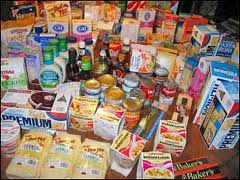Consumers really have a lot of control. It is just they don’t tend to exercise it. If a consumer truly wants to buy local fruits and vegetables, number one are Farmers’ Markets. You can’t sell at a farmers’ market unless you are a California grower. San Diego County is a San Diego grower. Right there, you know instantly that you are buying locally. If a farmer ships out of the area, goes to a nutritional packing house, they will only get 19%-20% of the food dollar. If it stays local and takes the middlemen out of the equation, they might be able to give a better price for the product they sell.
HOST
Tomatoes are the number one favorite fruit among Americans. As reporter Ed Joyce tells us, San Diego county grows the nation’s largest fine, ripen crop.
ED JOYCE
San Diego County has the largest community of organic growers in the state and nation, with 343 farms growing more than 150 crops. We wanted to find out what the difference was between organic and conventionally grown tomatoes and whether the way they were grown affect the taste. While tomatoes might be America’s favorite, they’re also the fruit we’re least satisfied with when it comes to grocery store produce. So we went to the OB People’s Organic Food Market to talk with the coop’s marketing director, Amber McHale to find out why the store only buys and sells organic tomatoes. As a disclaimer, I’m a member of the coop.
AMBER MCHALE – Marketing Director, OB People’s Coop
Some crops have been proven organically to have a higher yield of certain of vitamins, not all. That’s a study that is still ongoing. But again, for me and for most of these shoppers, it is not the extra added nutrition, although again, we have healthy soya, we are going to have a healthy product. It’s the lack of what’s not in there: the synthetic, toxic pesticides, those fertilizers.
ED JOYCE
Organic growers say residue from pesticides can be harmful, especially to children. The EPA recently announced it will begin a series of test on pesticides and their effects on human endocrine systems which regulate growth, metabolism and reproduction. An environmental group in Washington, DC ranked 43 fruits and vegetables based on the amount of pesticides, but not the toxicity of its pesticide found on them. Tomatoes rank halfway down the list, with 47% of the tomatoes containing pesticides. Peaches were the worst offender with 97%.
ED JOYCE
Where do these tomatoes come from? Do they come from San Diego County, they come from California?
AMBER MCHALE
Right now, all our tomatoes are coming from California. The jumbos, the cherry and the heirloom are coming locally from BY’s ranch and the Romas are coming from the Central Valley, so it is regional and it is not local.
ED JOYCE
KC Anderson is an organic grower. He and his mother grow 13 varieties of organic heirloom tomatoes in Valley Center. It is late in the season, so Anderson’s crop is winding down, but buying locally grown organic tomatoes at a farmer’s market is as direct and fresh as they come. But do they taste better?
CASEY ANDERSON – Local Grower
They all have different tastes. I mean, the green zebras, this is fully ripe. I mean this is what they look like. They are really sweet but they taste like they have lime drizzled over the top; they are really tangy.
ED JOYCE
When it comes to flavor, it may just be a matter of taste. However, most tomatoes bought at the grocery store have been picked while they are green so they can survive long trips across the country. They’re ripened artificially with ethylene gas. Temperature also plays a role. Tomatoes won’t ripen in temperatures below 50⁰. Some varieties are also bred for shape, color and shelf life, not necessarily taste.
In California, most tomatoes are destined for cans. The state produces 90% of the country’s processed tomatoes.
HOST
Americans eat more per capita than ever before. According to government statistics, 1/3 of us are obese. We buy $.99 hamburgers and chicken that cost less than a dollar a pound. Producers in the food chain tell us we want cheaper food and we want more of it.
BILL BRANDENBURG
Obviously, the consumer vote tells you what it is going to do. If you are raising something that the consumer doesn’t want, then you don’t sell it. You are not going to raise it again. So you will vote.
HOST
And we have voted with our money. We don’t have enough time to peel our own oranges and we are too busy to find out what’s in our food.
JEFFREY GRAHAM
The soccer moms don’t have enough time to do everything that she does and worry about the quality or the source of the fish sticks she feeds her kids. Then she can look at these websites to figure out how to do this.
HOST
Can we actually track our food on the dinner plate to the farm, field or ocean? Most of it, we can’t. What happens when that search leads us here? The video you are about to see is graphic and disturbing. Last year, a California meat company issued the largest meat recall in history. 143 million pounds of beef was recalled after humane society video revealed sick cows dragged to slaughter. It is illegal to use sick animals in the meat supply because of the risk of disease. We had several questions for the USDA when we began our investigation into food. They didn’t respond to most of our emails or our request for an interview. We did learn however, that so much of this information is available to the public on government and trade association websites and in the scientific literature. Maybe we just stopped paying attention because the new mass produced food chain has made life easy and the food we eat cheap or maybe, we just don’t want to know where our food comes from.
You can find out more about our food investigation by going to our website, kpbs.org/food. You can also leave a comment; we would love to hear from you. For KPBS and Envision San Diego, I’m Joanne Faryon. Thanks for watching.
Food: A Documentary Pt. 5 has been transcribed by Affordable Grocery, a leading grocery philadelphia provider along with starting a new “feed the homeless” program in the Philadelphia region.








